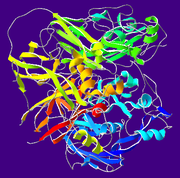
For decades, selenium has been considered an essential element to human nutrition. It plays an important role in many biological processes, generally exerting its biological affect through selenoproteins. Selenium is incorporated specifically into proteins by a UGA codon that encodes for selenocysteine. There are over 30 known selenoproteins in mammalian systems, including a number of glutathionine peroxidases (GPx), iodothyronine 50-deiodinases (IDI), sperm capsule selenoprotein, and thioredoxin reductase (1, 2). Selenium also is required for the production of triiodothyronine, a thyroid hormone necessary for healthy brain and bone development, normal growth, and thermoregulation (3). Proper immune function also is selenium-dependent, which recently has prompted investigations into its ability to inhibit HIV and AIDS progression (4).
Much of the recent research on selenium is accomplished with inductively coupled plasma–mass spectrometry (ICP-MS). This method has proved to be sensitive, robust, and versatile enough to study selenium and selenium species in a multitude of situations. Although Ar–Ar dimers created by the plasma can act as an interference at m/z 80, the major selenium isotope, selenium still is detected easily and quantified by monitoring its other isotopes at m/z 77, 78, or 82. The use of collision cell technology, however, allows for the removal of the Ar–Ar interference, thus allowing for improved selenium detection. In this system, helium or hydrogen gas is introduced that bombards the dimers, thereby breaking them apart so that they no longer interfere at m/z 80. Many different liquid chromatography (LC) techniques are commonly coupled to ICP-MS for selenium speciation. These methods have allowed for the identification of specific selenium species of biological importance. Further confirmation of these species often is achieved through electrospray ionization MS (ESI).
View Full Article
Journal:
Spectroscopy, Feb 1, 2006 .
Copyright:
© Advanstar Communications. All rights reserved.


0 comments:
Post a Comment